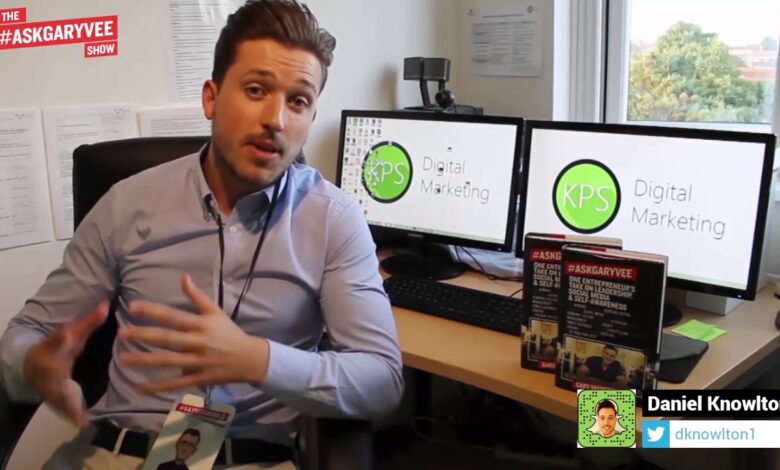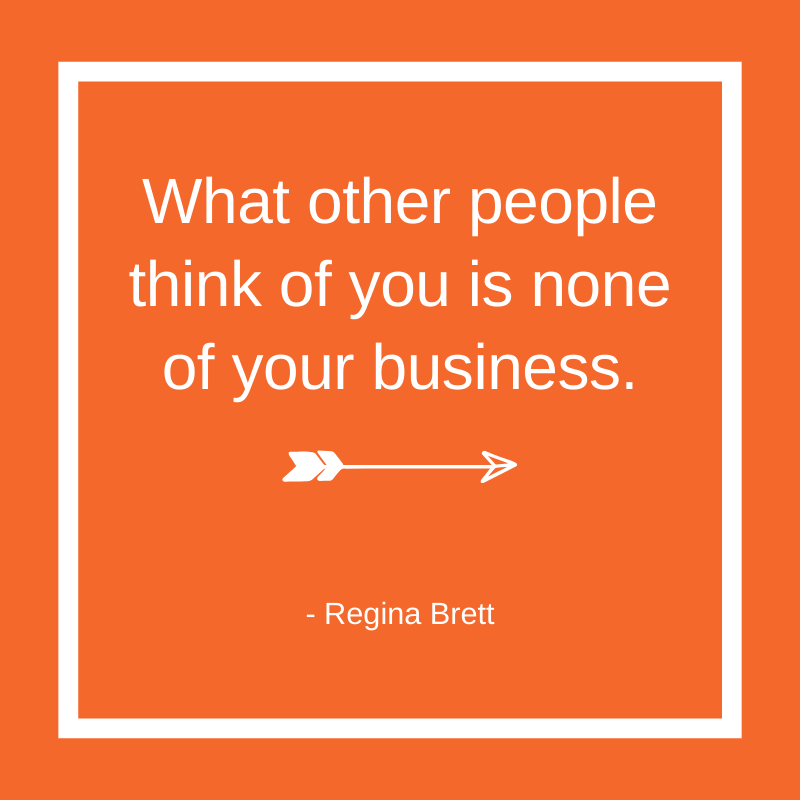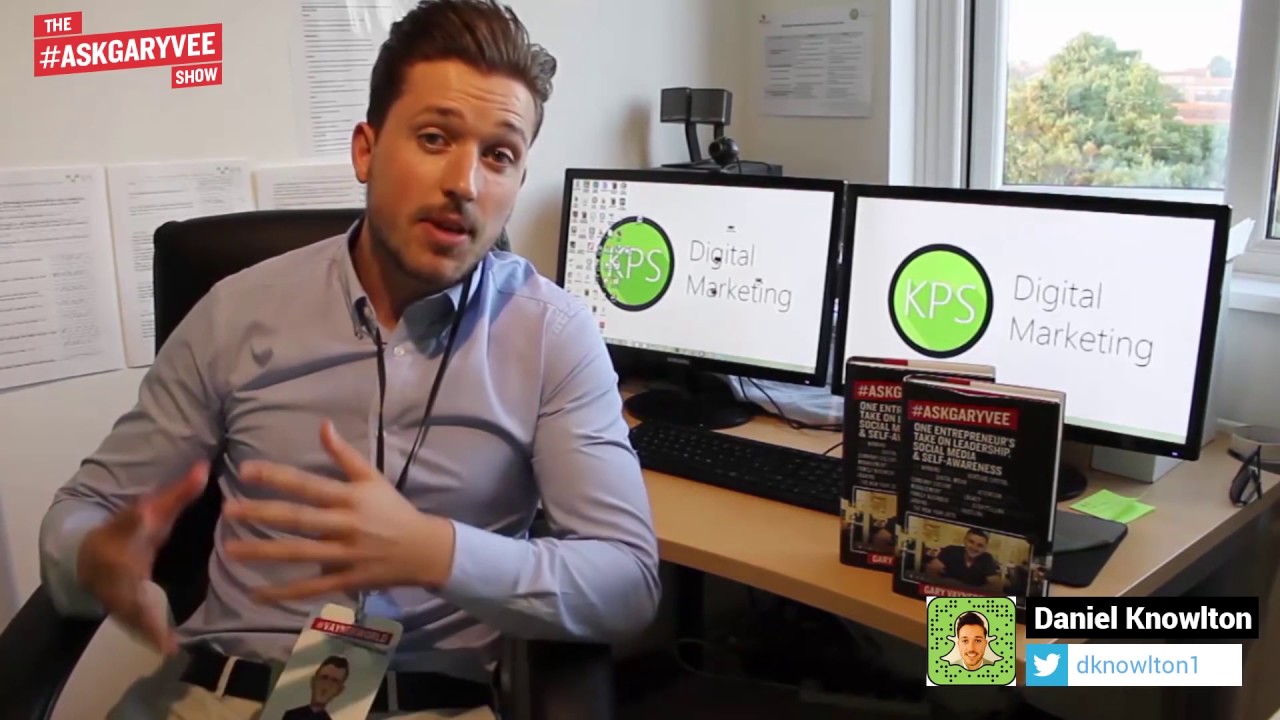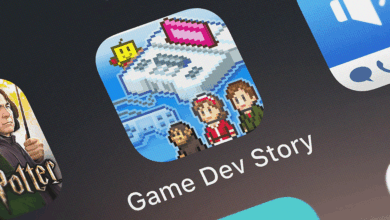
Look at Yourself as a Business, Not an Employee
Look at yourself as a business rather than an employee – it’s a powerful shift in perspective that can unlock incredible opportunities for growth and success. Imagine yourself as the CEO of your own career, responsible for developing your skills, marketing your expertise, and building a thriving enterprise.
This mindset empowers you to take control of your future, embrace responsibility, and maximize your potential.
By adopting this entrepreneurial approach, you’ll gain valuable insights into the market, identify your unique value proposition, and build a strong personal brand that resonates with your target audience. This transformation goes beyond simply seeking a job; it’s about creating a sustainable and fulfilling career path that aligns with your passions and aspirations.
Shifting Mindset
The transition from employee to business owner requires a fundamental shift in perspective. This shift involves embracing a new set of beliefs, values, and behaviors that are essential for success in the entrepreneurial world.
The Fundamental Shift
The employee mindset is often characterized by a focus on tasks, following instructions, and receiving direction from superiors. In contrast, the entrepreneurial mindset is driven by a vision, a passion for creating something new, and a willingness to take risks.
Advantages of an Entrepreneurial Mindset
Adopting an entrepreneurial mindset offers numerous advantages.
- Increased Control: Business owners have greater control over their work, schedule, and decisions. They can set their own goals and pursue their passions without being limited by the constraints of a traditional job.
- Enhanced Responsibility: The entrepreneurial journey fosters a sense of responsibility and accountability. Business owners are directly responsible for their success or failure, which motivates them to work hard and make smart decisions.
- Potential for Growth: The entrepreneurial mindset allows individuals to unlock their full potential. By taking ownership of their careers, they can build their businesses, expand their skills, and achieve financial freedom.
Comparing Mindsets
| Employee Mindset | Entrepreneurial Mindset |
|---|---|
| Focus on tasks and instructions | Focus on vision and creating value |
| Relies on external direction | Drives self-motivation and initiative |
| Limited control over work and schedule | Greater control and flexibility |
| Dependent on salary and benefits | Potential for unlimited earnings and growth |
Identifying Your Unique Value Proposition

Once you’ve embraced the mindset of a business owner, the next crucial step is to define your unique value proposition (UVP). Your UVP is what sets you apart from the competition and compels potential clients or customers to choose you.
Identifying Your Unique Skills, Knowledge, and Experiences
The foundation of your UVP lies in your unique combination of skills, knowledge, and experiences. This is where you take stock of your strengths and identify what makes you different and valuable.
- Skills:What specific skills do you possess that are in high demand? Are you a master communicator, a creative problem solver, a technical whiz, or an expert in a particular niche?
- Knowledge:What specialized knowledge do you have that others lack? Perhaps you have in-depth knowledge of a specific industry, a unique understanding of a particular process, or a deep understanding of a specific market.
- Experiences:What unique experiences have shaped your skills and knowledge? Have you worked on challenging projects, overcome obstacles, or developed unique perspectives through your career journey?
Translating Assets into Tangible Products or Services
Once you’ve identified your unique assets, the next step is to translate them into tangible products or services that address specific market needs.
It’s easy to get caught up in the day-to-day grind of work, but remember that you’re not just an employee, you’re a valuable asset. Just like a business, you have unique skills and experiences that you can leverage to achieve your goals.
It’s a perspective that can be eye-opening, especially when you consider how America almost took a different path toward abortion rights, as detailed in this fascinating article: america almost took a different path toward abortion rights. By viewing yourself as a business, you can actively invest in your own growth and development, ultimately leading to a more fulfilling and successful career.
- Define your target market:Who are you trying to reach with your offerings? What are their pain points, challenges, and aspirations?
- Connect your assets to market needs:How can your skills, knowledge, and experiences solve problems or fulfill desires within your target market?
- Develop a value proposition statement:Craft a clear and concise statement that articulates the value you offer to your target market. This statement should highlight the benefits of your product or service and explain why your solution is superior to others.
Examples of Successful Value Proposition Leveraging
Many individuals have successfully leveraged their unique skills and expertise to create profitable businesses.
- A freelance writer with expertise in :This individual identified a market need for high-quality, -optimized content. They leveraged their writing skills and knowledge of to offer content creation services to businesses looking to improve their online visibility.
- A graphic designer with a passion for sustainability:This designer recognized the growing demand for eco-friendly packaging and branding materials. They used their design skills to create sustainable packaging solutions for businesses committed to environmental responsibility.
Building Your Personal Brand
In today’s competitive job market, simply having a strong resume and impressive skills isn’t enough. To stand out and attract opportunities, it’s crucial to build a personal brand that reflects your unique value proposition and resonates with your target audience.
Think of your personal brand as a powerful marketing tool that showcases your expertise, personality, and value to the world.
Thinking of yourself as a business, not just an employee, can be a game-changer. It means taking ownership of your skills, investing in your development, and actively seeking opportunities for growth. Just like a business needs to adapt to market changes, you need to be agile and informed.
Speaking of change, it’s interesting to see how the House panel is diving into the mystery of unexplained aerial sightings, house panel to hold public hearing on unexplained aerial sightings. Ultimately, whether it’s exploring the unknown or building your career, a proactive mindset is key to success.
Developing a Compelling Online Presence
A strong online presence is essential for building a personal brand. It allows you to connect with potential employers, clients, and collaborators, showcasing your skills and thought leadership.
Thinking of yourself as a business rather than an employee can be a powerful mindset shift. It means taking ownership of your skills, your value, and your future. But it’s also important to remember that in an uncivil age, calls for civility can sometimes be used to silence dissent and squash effective protest.
So, while building your own brand and negotiating your worth are important, remember that sometimes, a little “uncivility” is needed to fight for what’s right. Ultimately, it’s about finding the balance between self-promotion and advocating for change.
- Create a Professional Website:Your website should be a central hub for your personal brand. It should clearly communicate your value proposition, highlight your skills and experience, and provide a platform for sharing your work and insights.
- Leverage Social Media:Utilize social media platforms like LinkedIn, Twitter, and Instagram to engage with your target audience, share your expertise, and build relationships. Tailor your content to each platform and focus on providing valuable insights and engaging with your followers.
- Develop a Content Strategy:Create high-quality content that demonstrates your expertise and thought leadership. This can include blog posts, articles, videos, podcasts, or even online courses. Regularly publish content to establish yourself as a trusted source of information.
- Optimize Your Online Profiles:Ensure your profiles on LinkedIn, Twitter, and other platforms are updated, professional, and reflect your personal brand. Use s relevant to your industry and value proposition to make it easier for people to find you.
Networking Effectively
Networking is a vital aspect of building a personal brand. It allows you to connect with individuals in your field, build relationships, and learn from others.
- Attend Industry Events:Participate in conferences, workshops, and other industry events to meet new people, learn about emerging trends, and showcase your expertise.
- Join Professional Organizations:Joining relevant professional organizations provides opportunities to network with like-minded individuals, attend events, and stay up-to-date on industry trends.
- Reach Out to Influencers:Identify individuals in your field who have a strong online presence and engage with their content. Consider reaching out to them for advice, collaboration, or mentorship opportunities.
- Build Relationships:Networking isn’t just about collecting business cards; it’s about building genuine relationships. Take the time to get to know people, stay in touch, and offer support when possible.
Successful Personal Brands: Examples and Key Components
Numerous individuals have successfully built strong personal brands that have helped them achieve their career goals.
“Personal branding is about telling your story in a way that resonates with your target audience.”
Dorie Clark
- Gary Vaynerchuk:Known for his energetic and authentic approach, Gary Vaynerchuk has built a successful personal brand by leveraging social media, sharing his insights on entrepreneurship, and connecting with his audience on a personal level.
- Marie Forleo:Marie Forleo is a renowned entrepreneur and motivational speaker who has built a strong personal brand by focusing on creating high-quality content, providing valuable advice, and building a loyal community around her brand.
- Seth Godin:Seth Godin is a marketing guru and author who has established a personal brand based on his thought leadership, insightful writing, and unique perspective on business and marketing.
Marketing and Sales Strategies
As an individual operating as a business, you are not only responsible for delivering your services or products but also for marketing and selling them. You become your own marketing and sales team, requiring a strategic approach to reach your target audience, generate leads, and convert prospects into clients.
Developing a Marketing Strategy
A well-defined marketing strategy is essential for attracting your ideal clients. This strategy Artikels your target market, messaging, and chosen channels for reaching them.
Identifying Your Target Market
Understanding your target market is fundamental to effective marketing. This involves defining the specific group of individuals who are most likely to be interested in your offerings.
- Demographics:This includes factors like age, gender, location, income, education, and occupation.
- Psychographics:This focuses on their interests, values, lifestyles, and motivations.
- Behavioral Factors:This encompasses their purchasing habits, online behavior, and engagement with specific platforms.
Crafting Your Messaging
Your messaging should clearly articulate your unique value proposition, addressing the specific needs and pain points of your target market. It should be concise, persuasive, and tailored to the chosen channels.
- Value Proposition:This is the core benefit you offer, highlighting how your services or products solve a problem or fulfill a need.
- Brand Voice:This is the tone and style of your communication, reflecting your personality and brand values.
- Call to Action:This is a clear and specific instruction encouraging your audience to take a desired action, such as visiting your website or scheduling a consultation.
Choosing Marketing Channels
Selecting the right marketing channels is crucial for reaching your target audience effectively. Consider the following options:
- Social Media:Platforms like LinkedIn, Twitter, Facebook, and Instagram offer targeted advertising and organic content sharing.
- Content Marketing:Creating valuable and engaging content, such as blog posts, articles, videos, and podcasts, can attract and educate your audience.
- Email Marketing:This allows you to nurture leads and build relationships through personalized email campaigns.
- Networking:Attending industry events, joining professional organizations, and connecting with potential clients through online platforms can expand your reach.
- Website:Your website serves as your online presence, providing information about your services or products, testimonials, and contact details.
Developing a Sales Strategy
Your sales strategy focuses on converting leads into paying clients.
Generating Leads
Generating leads is the first step in the sales process. This involves attracting potential clients and capturing their contact information.
- Lead Magnets:These are free resources, such as ebooks, webinars, or templates, offered in exchange for contact information.
- Contests and Giveaways:These can generate excitement and attract new leads while promoting your brand.
- Social Media Engagement:Actively engaging with your audience on social media platforms can generate leads and build relationships.
- Networking:Building relationships with industry professionals and potential clients can lead to referrals and opportunities.
Converting Leads into Clients
Once you have generated leads, it’s time to convert them into paying clients.
- Sales Funnel:This is a structured process that guides leads through different stages, from awareness to purchase.
- Sales Pitch:This is a persuasive presentation that highlights the value proposition of your services or products.
- Follow-Up:Consistent follow-up with leads is crucial for building trust and nurturing relationships.
- Closing the Deal:This involves effectively addressing objections and guiding prospects towards a purchase decision.
Sample Marketing Plan
Consider this hypothetical example of a marketing plan for a freelance graphic designer:
Target Market:
Small businesses and startups in the technology and creative industries seeking branding and marketing materials.
Messaging:
“Elevate your brand with stunning visuals that captivate your audience and drive results.”
Channels:
- Social Media:LinkedIn, Behance, and Instagram.
- Content Marketing:Blog posts on design trends and tips for small businesses.
- Email Marketing:Newsletters featuring design portfolio highlights and special offers.
- Networking:Attending industry events and joining online communities.
- Website:Showcase portfolio, services, and testimonials.
Financial Management and Operations: Look At Yourself As A Business Rather Than An Employee

Financial management is the lifeblood of any business, and for individuals operating as businesses, it’s no different. Effective financial management ensures sustainability, growth, and the ability to achieve your business goals. It involves managing your income, expenses, and overall financial health to make informed decisions and navigate potential challenges.
Budgeting
A budget is a financial plan that Artikels your expected income and expenses over a specific period. It serves as a roadmap to guide your financial decisions and track your progress.
- Income Forecasting:Accurately estimate your potential income streams based on your services, products, or projects. Consider factors like pricing, sales volume, and seasonal variations.
- Expense Planning:Categorize your expenses into fixed costs (rent, utilities) and variable costs (materials, marketing). Estimate each expense category based on historical data or market research.
- Budgeting Tools:Utilize budgeting software, spreadsheets, or financial apps to simplify the process and automate calculations.
- Regular Review and Adjustment:Periodically review your budget to assess performance and make adjustments as needed. Market changes, unexpected expenses, or business growth may require revisions.
Expense Tracking
Tracking your expenses diligently is crucial for understanding where your money goes and identifying areas for potential savings.
- Expense Categorization:Group your expenses into meaningful categories like marketing, travel, supplies, or rent. This allows for easier analysis and identification of spending patterns.
- Receipt Management:Keep organized records of all receipts, invoices, and payment confirmations. This ensures accurate expense tracking and facilitates tax preparation.
- Expense Tracking Tools:Utilize expense tracking apps, spreadsheets, or accounting software to streamline the process and generate reports.
- Regular Analysis:Periodically analyze your expense data to identify areas of overspending, unnecessary costs, or potential cost-saving opportunities.
Revenue Generation, Look at yourself as a business rather than an employee
Generating revenue is the primary objective of any business.
- Value Proposition:Clearly define your unique value proposition – what makes your business stand out and why customers should choose you over competitors.
- Pricing Strategy:Determine a pricing strategy that aligns with your value proposition, target market, and competitive landscape. Consider factors like cost-plus pricing, value-based pricing, or competitive pricing.
- Sales and Marketing:Develop effective sales and marketing strategies to reach your target audience and generate leads. Explore various channels like social media, email marketing, networking, and content marketing.
- Customer Acquisition and Retention:Focus on acquiring new customers while nurturing existing relationships to ensure ongoing revenue streams.
Optimizing Operations
Efficient operations are essential for maximizing productivity and profitability.
- Process Optimization:Analyze your business processes to identify inefficiencies and areas for improvement. Streamline workflows, automate tasks, and eliminate unnecessary steps.
- Resource Allocation:Allocate resources effectively to ensure optimal utilization and minimize waste. This includes managing time, finances, and personnel.
- Technology Adoption:Leverage technology to automate tasks, improve communication, and enhance productivity. Consider using project management software, communication tools, or automation platforms.
- Continuous Improvement:Embrace a culture of continuous improvement by regularly seeking feedback, identifying areas for optimization, and implementing changes to enhance efficiency.
Sample Budget
Here’s a sample budget for a hypothetical individual business offering freelance graphic design services:
| Income | Amount |
|---|---|
| Design Projects | $5,000 |
| Branding Packages | $3,000 |
| Website Design | $2,000 |
| Total Income | $10,000 |
| Expenses | Amount |
|---|---|
| Software Subscriptions | $500 |
| Marketing and Advertising | $1,000 |
| Office Supplies | $200 |
| Professional Development | $300 |
| Total Expenses | $2,000 |
Net Income: $10,000$2,000 = $8,000
Last Point
Embracing the “business of you” mindset requires a proactive and strategic approach. It’s about continuously learning, adapting, and building a network of supportive connections. By investing in your personal brand, marketing your skills, and managing your finances effectively, you can create a thriving career that is both rewarding and fulfilling.
Remember, you are the CEO of your own career – it’s time to take charge and build the business you’ve always dreamed of.






